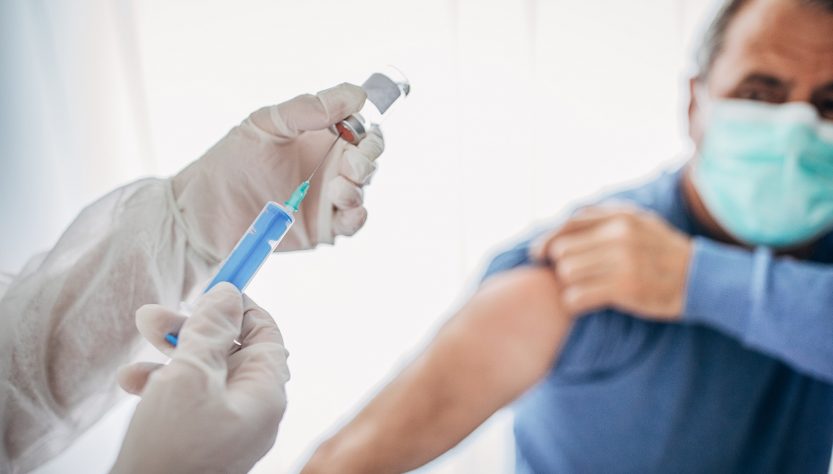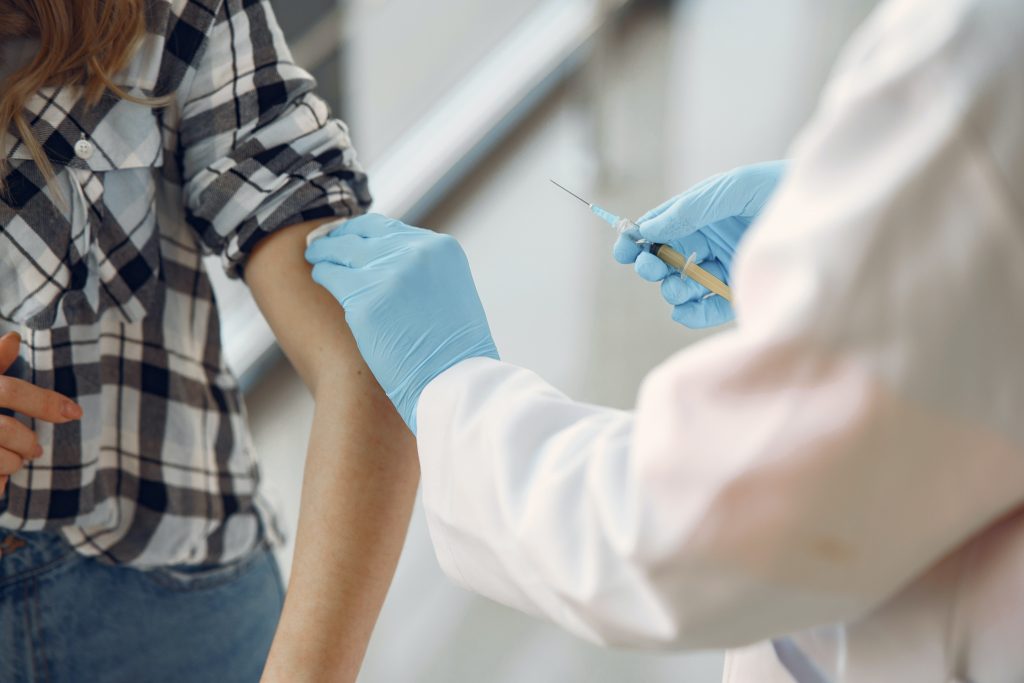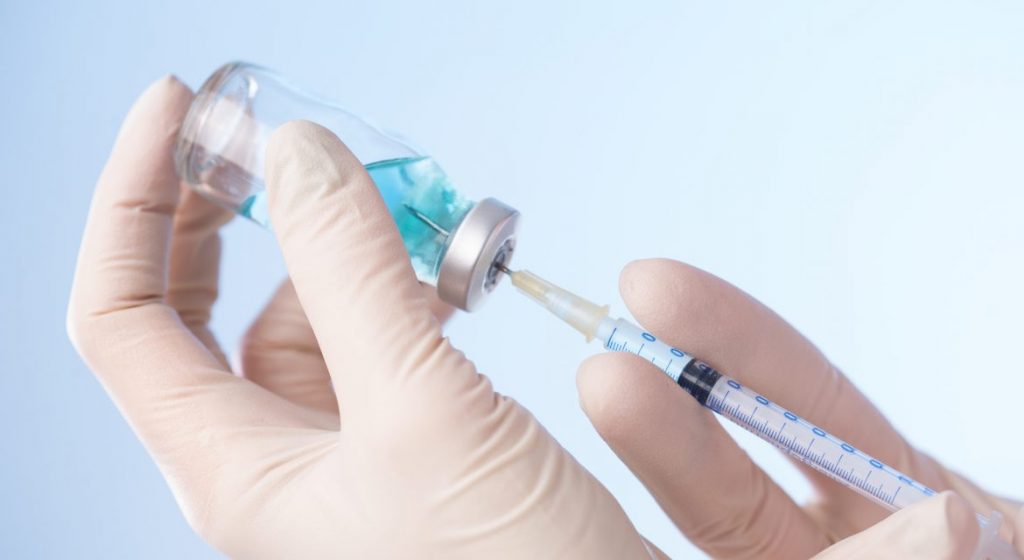Ali Omar Yassen
MPharm
Faculty Of Pharmacy, Tishk International University
Abstract
Measles is a highly contagious viral infection that most commonly occurs among children and adolescents. The typical symptoms of measles include fever, cough, coryza, conjunctivitis (The three C’s), an enanthem (Koplik spots) on the oral mucosa, and a maculopapular rash that spreads cephalocaudally. Diagnosis is usually clinical. The treatment including supportive and vitamin. However, vaccination is highly effective. Worldwide, measles infected about 20 million people and caused about 110,000 deaths worldwide in 2017, predominantly among children. These numbers can vary dramatically over a short period depending on the vaccination status of the population. To reduce mortality rate related to measles, appropriate management is required to eradicate such an infectious disease, this can be achieved by implementing standard vaccination programme, vitamin A and novel antiviral against measles, because researches have shown adequate vaccination programme with vitamin A and antiviral have a significant impact to eradicate measles in paediatrics. Nevertheless, high doses of vitamin A is highly associated with a significant decrease in mortality and complications of measles among children. Therefore according to studies, a good practice of vaccination programme to prevent measles infection is extremely important. Vitamin A with antiviral are recommended to avoid complications and mortality related to measles infection.
Keywords: Measles, Mortality, Vaccination, Vitamin A, Novel antiviral
Introduction
Measles is a highly contagious disease caused by the Paramyxovirus group. The disease remains one of the leading causes of death among young children and adults despite the effective vaccination and treatment [1]. Forty years after effective vaccines were licensed, measles continues to cause death and severe disease in children worldwide. Measles can manifest in almost every organ system. The complications of measles include pneumonia, croup, and encephalitis which are common causes of death. Measles also remains a common cause of blindness among children. Complication rates are higher in infant and children’s, whilst croup and otitis media are more common in those less than two years old and encephalitis in older children and adults. Complication rates are raised by immune deficiency disorders such as malnutrition, vitamin A deficiency, intense exposures to measles, and lack of previous measles vaccination. Case-fatality rates have decreased with improvements in socioeconomic status in many countries but remain high in developing countries[2]. Furthermore, measles case fatality ratios vary depending upon the average age of infection, the nutritional status of the population, measles vaccine coverage, and access to health care. In developed countries, less than one in 1,000 children with measles die [3]. Deaths from measles are largely due to an increased susceptibility to secondary complications bacterial and viral infections. This period of increased susceptibility lasts for several weeks to months after the onset of rash, and it is attributed to a prolonged state of immune suppression. Most deaths related to measles are due to pneumonia [4]. The purpose of this narrative review is to discuss the potential impact of management of measles using a suitable vaccination programme, vitamin A and a novel antiviral to minimize complications and mortality linked to measles in children.
Use of Vaccines for Preventing Measles
The distribution of a measles-containing vaccine (MCV1) among infants below the age of 9 months in high-risk settings has the potential to reduce measles-related morbidity and mortality. Protecting infants against measles can be achieved by ensuring high coverage with two doses of a measles-containing vaccine (MCV). The World Health Organization (WHO) recommends that the first dose of MCV (MCV1) should be given at 9 or 12 months of age, depending on the level of measles virus transmission, with early administration appropriate for settings where transmission is high [5]. Moreover, the Centre for Disease Control and Prevention (CDC) recommends that people get MMR vaccine to protect against measles, mumps, and rubella. Children should get two doses of MMR vaccine, starting with the first dose at the age of 12 to 15 months, and the second dose at the age of 4 through 6 years [6]. According to ‘’Strebel PM’’ author, the optimal time for administration of MCV1 depends on the age at which infants have a sufficiently mature immune system to respond to an MCV, the age at which infants are at risk of infection, and the age when maternal antibodies defect or no longer have an inhibitory effect on the immunogenicity of MCV. The optimal timing also depends on the aim and plan of national immunisation programmes and their progress towards measles elimination [7]. Besides, according to a systematic review for optimal time of administration of measles vaccine in children, retrieved from 1156 records and titles and abstracts of 1071 articles were screened and 241 met the inclusion criteria and were assessed for eligibility. The meta-analysis outlined that evidence of humoral and cellular immunity, including seropositivity, geometric mean titres, avidity, T-cell stimulation, and vaccine effectiveness. It also found a high seropositivity (98%) and vaccine effectiveness (95%) after a two-dose MCV regime starting prior to 9 months-of-age, with no evidence of lesser protection than after a two-dose MCV schedule starting at 9 months or older [8]. This meta-analysis determined that administering MCV1 to infants younger than 9 months followed by additional MCV doses results in high seropositivity, vaccine effectiveness, and T-cell responses, which are independent of the age at MCV1 which supports the vaccination of very young infants in high-risk settings. Furthermore, some evidences has shown that MCV1 administered to infants younger than 9 months resulted in lower antibody titres after one or two subsequent doses of MCV than when measles vaccination is started at the age of 9 months or older; however, this specific outcome has lack of proof and documentation deviance. Due to this fact, infants younger than 9 months are highly recommended to receive vaccination against measles, particularly in endemic countries.
Improving Vaccination Programmes
A widely incorporated approach to preventing diseases is the use of national vaccination programmes to help stem the spread. The importance and role of vaccines in the public treatment of measles in the community are well understood and a crucial step is identifying the best dose and how to administer it, which in this case would be a 2-dose anti-measles vaccine targeting children between the ages of 9 months to 14 years. According to studies, the best age of a patient to receive a dose is between 9 to 11 months with the lowest risk of measles occurrence [9]; however, implementing an appropriate vaccine programme requires substantial planning to distribute doses to the community. This can also be made more difficult by refusal of immunization among some low-income countries and some conservative populations. To help avert this, a strategy is required to educate parents of the target population and other community members on immunisation. A widespread embracement of health education at facilities in combination with other strategies such as redesigned immunisation reminder cards, regular immunisation outreach with and without household incentives, home visits by pharmacists or other health care professionals and integration of immunisation with other services may enhance childhood immunisation coverage, especially in low and middle-Income Countries [10].
Role of Vitamin A in Paediatric Measles:
Vitamin A deficiency is one main risk factor for severing measles to occur. Moreover, vitamin A deficiency exacerbates measles complications which is includes blindness and late recovery among paediatrics measles. Acute measles worsens vitamin A deficiency by depleting vitamin A stores and increasing its usage, leading to a more frequent and severe ocular injuries [11]. Therefore the World Health Organization recommends intramuscular vitamin A administration for all children as soon as measles is diagnosed [12]. The World Health Organization recommends vitamin A for two consecutive days, regarding doses, differ according to the age of the patient, at 50,000UI/dose for neonates younger than 6 months, 100,000 UI/dose between 6 and 11 months, and 200,000UI/dose for 12-month-old children and older, all of them for 2 days [13]. If clinical signs of vitamin A deficiency are noticed (Bitot’s spots), a third dose should be administered 4 to 6 weeks later. Also, vitamin A supplementation has shown to lead to a reduction in morbidity and mortality in children younger than 5 years [14]. On the other hand, ‘’Bello .S’’ team stated, from their randomized control trial, it was shown vitamin A administration in well-nourished children diagnosed with measles but with no prior clinical features of vitamin A deficiency, the study method including two randomized clinical trials involving 260 children with measles which compared vitamin A with placebo, the study concluded the serum retinol level increased significantly one week after two doses of vitamin given on two consecutive days at the WHO recommended dosage. A single dose of 200,000 IU did not increase the serum retinol significantly two weeks after administration. However, administration of three doses of vitamin within one week did not result in a significant increase in serum retinol level six weeks post-intervention. Likewise, there was no significant difference in weight gain between the vitamin A group and the placebo group six weeks and six months post-administration of three doses of vitamin A. Additionally, there was no significant difference in the percentage of under-nutrition at one week and two weeks post-administration of a single dose of 200,000 IU of vitamin A [15]. This study illustrated that children with no evidence of vitamin A deficiency are still required to receive only single-dose; however, for children with inadequate vitamin A it recommended to follow WHO recommendation for measles management. Moreover, according to systematic review and meta-analysis, to determine if vitamin A supplementation is associated with reductions in mortality and morbidity in children aged 6 months to 5 years, the review data sources have taken from Cochrane Central Register of Controlled Trials (CENTRAL), including 43 trials with about 215,633 children, Seventeen trials including 194,483 participants reported a 24% reduction in all-cause mortality (rate ratio=0.76, 95% confidence interval 0.69 to 0.83). As claimed by this review, Vitamin A supplementation was associated with a reduced measles (0.50, 0.37 to 0.67) and a reduced prevalence of vision problems, including night blindness (0.32, 0.21 to 0.50) and xerophthalmia (0.31, 0.22 to 0.45) [16] as shown in Figure 1. This review highlighted that vitamin A reduced incidence of measles by 50% (37%-67%) in complications and mortality among children aged 6 months to 5 years in measles illness.
Use of Ribavirin Therapy as Antiviral in Measles Cases
Ribavirin is a broad-spectrum antiviral drug. It has low toxicity and has multifarious mechanisms of action and, therefore, viral resistance rarely develops. In the study conducted in Beliaghata General Hospital, researchers demonstrated the effect of ribavirin in fast recovery and hospital stays of immuno-competent measles infections with and without complication. This study was conducted retrospectively in 100 randomly selected measles cases over 5 years. It included patients that were diagnosed with measles with complications such as pneumonia and encephalitis, and without complication among all ages. All patients received 10 mg/kg/day for 5 days of ribavirin and the study concluded that patients who had received ribavirin had a faster recovery and a reduction in hospital stay which was statistically significant [17]. Furthermore, a significantly reduced mortality rate was reported in a cross-sectional study in which 100 adult patients diagnosed with acute measles received ribavirin. The number of fatal cases reached 4.34% in the group who did not receive ribavirin compared to 0% in the other group [18]. Regarding the dosage and duration of ribavirin, there is no consensual recommendation available although one case report used a dose of 50mg/kg/day for 3 weeks on a 9-year-old child [19]. However there is no guideline consensus for recommending ribavirin used in measles, but research and case reports have shown a beneficial effect of ribavirin in measles in paediatrics, precisely in complicated measles with pneumonia and encephalitis.
Supportive Management in Measles Cases
Another strategy in controlling measles illness is a supportive treatment to avert complications and fatalities in children. Supportive management is highly recommended in paediatric measles. Supporting measures include antibiotics, antipyretic and other relevant managements, as well as the education of patients and family members to prevent concurrent infections. The WHO guideline for supportive management related to measles illness has more detailed information regarding this aspect.
Conclusion
Vaccination and vitamin A therapy are the cornerstone of successful management of measles because the application of both is highly associated with diminishing complications and mortality rates among children suffering from measles. Additionally, WHO recommended early vaccination in children particularly in endemic countries. Vitamin A is essential in preventing and treating measles and due to this fact, many studies and reviews advocate vitamin A and vaccines in preventing and managing measles. Studies also support antiviral usage, especially ribavirin, for managing complications of measles, decreasing hospitalization and quick recuperation. Lastly, supportive treatment is vital in managing measles in paediatrics to minimize complications and improve quality of life among paediatrics.




